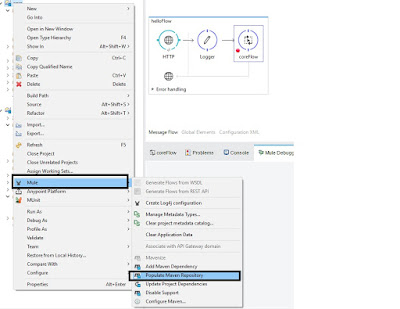MuleSoft ESB

MuleSoft AnyPoint Studio Build failed when (i.e unable to download mule runtime and mule dependencies) running mule project with Anypoint studio for first time using RunAs-->Mule Application with Maven. Resolved the build issue by navigating to Mule-->Populate Maven Repository above action downloaded all mule dependencies to local repo(.m2 folder) Sharing Common/Custom code or Flows in different Mule applications Referring common core mule flows/subflows or Java classes ( example: reading common header, cookies, logging ) across different mule applications. Create common core mule project(candidate flows/subflows and java classes used across different domains, like security, logging, headers etc). Example: core project defining “set Payload” to demonstrate usage. Build common core as jar file. ...